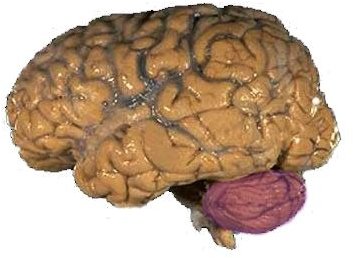Looking at the Causes of Dandy-Walker Syndrome. How Genes Create Children with Dandy-Walker Syndrome
Introduction
What is Dandy-Walker Syndrome? It is a congenital malformation that affects the cerebellum and the areas around it, which are filled with fluids. In children with Dandy-Walker Syndrome, the cerebellum, which is the organ that regulates movements and coordination, either partially or completely lacks the cerebellar vermis, which is the segment that connects the two hemispheres, or sides, of the cerebellum. Furthermore, the fluid areas around the cerebellum expand and, consequently, the pressure exerted inside the skull increases as well.
In addition, in children or infants affected by Dandy-Walker Syndrome, cysts are present in the back of the brain, at the base of the cranium. These cysts form during the early stages of embryonic development and usually enclose several blood vessels that actually connect the cysts to the brain. These blood vessels and the connection they establish with the brain are the reason why the cysts cannot be surgically removed, since the risks of causing significant damage to the brain would be too high.
Symptoms
Dandy-Walker Syndrome can develop silently for years (there are some affected individuals that can live their entire life without showing any signs of the disease), or it can appear suddenly. The symptoms of this syndrome are generally from the effects of the increased pressure exerted by the fluid against the brain. Some symptoms include:
-
vomiting
-
convulsions
-
irritability
Other signs of Dandy-Walker Syndrome are related to the improper functioning of the cerebellum and include:
-
lack of coordination in movements
-
instability
Dandy-Walker Syndrome can also have several implications on vision and affected children can present with:
-
erratic eye movements (a condition known as nystagmus)
-
malformations of the retina
-
cataracts
-
malformations in the area between the sclera, or the white part of the eye, and the retina
Often the circumference of the head is enlarged and a bulge in the back of the cranium is present, probably due to the presence of the cysts and to the increased amount of fluid. In many cases, children with Dandy-Walker Syndrome often present other disorders such as the absence of a corpus callosum (the nerve structure connecting the two hemispheres of the brain), heart abnormalities, and malformations of the limbs, fingers toes and face.
The Causes of Dandy-Walker Syndrome
The causes of Dandy-Walker Syndrome are still mostly unknown; however, studies performed in the last few years have shown a strong genetic component behind the onset of this disease. In fact, from genetic analyses carried out on children with Dandy-Walker Syndrome it has emerged that these patients have missing segments along chromosome 3. Specifically, within a region of the chromosome comprised of 15 genes, with two genes clearly playing a significant role: ZIC1 and ZIC4. ZIC1 is an acronym for Zinc finger in cerebellum 1 and was already known for the role it played in the development of the cerebellum, while the function of ZIC4 was not known before the Dandy-Walker studies. In mice, the loss of one copy of each gene causes brain damage and the mice display unbalanced movement or the incapacity to right themselves if they fall over.
Thanks to the genetic discoveries mentioned above, today it is possible for parents of children with Dandy-Walker Syndrome to undergo genetic testing if they decide to have other children; in this way, they will be able to discover the probability of having another child with the disease. Moreover, genetic tests can be a big help in prenatal diagnosis; in fact, the diagnosis of Dandy-Walker Syndrome via ultrasound is very difficult in the first weeks of pregnancy and it is usually not certain until after the 20th week. A genetic test could instead give parents more reliable information at a much earlier stage.
Treatment
There is no specific treatment for children affected by Dandy-Walker Syndrome; any form of intervention is usually aimed at treating the symptoms that are associated with the disorder. For instance, a tube is usually installed inside the skull to drain off fluid and to decrease internal pressure. Other types of interventions include pedagogical and other services, such as speech therapy, physical therapy or occupational therapy, which are established based on the specific needs of the affected child. Unfortunately, however, sometimes children with Dandy-Walker Syndrome are not able to attain normal cerebral development, despite early intervention on the fluid buildup.
Photo Credit
Released into the public domain by the United States Federal Government
